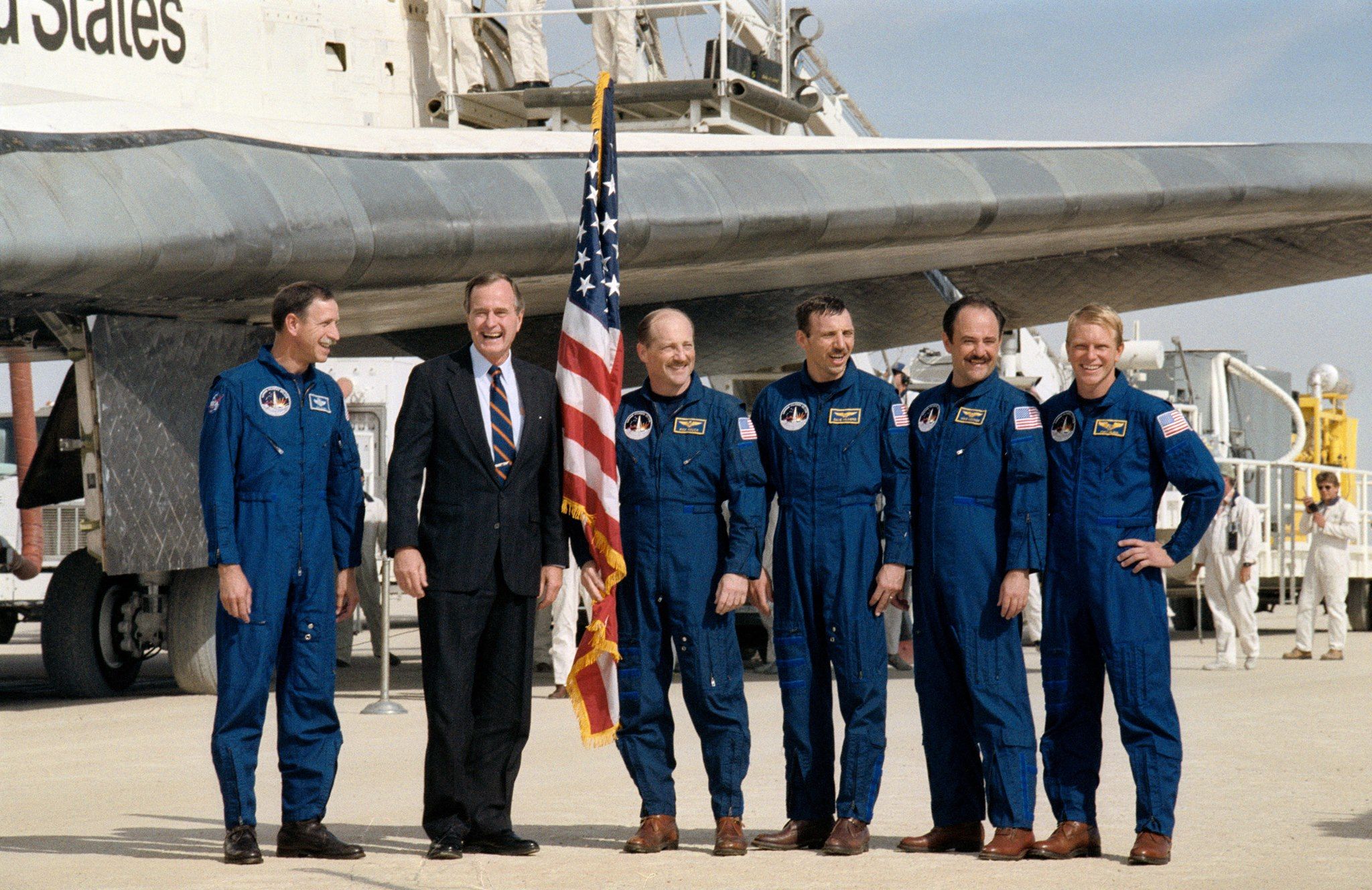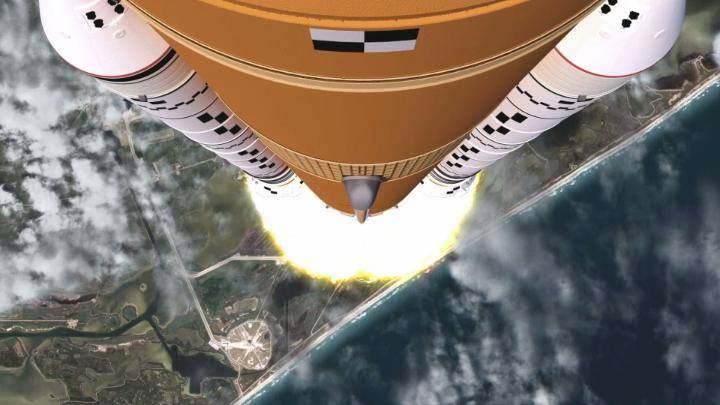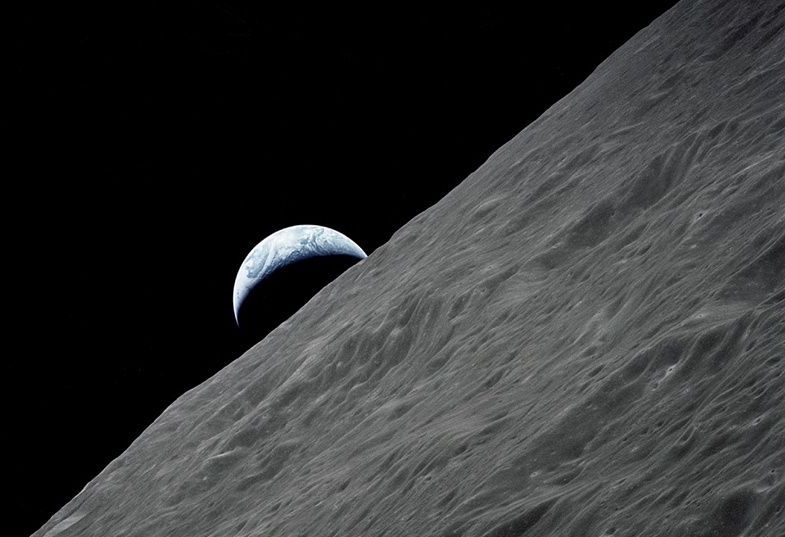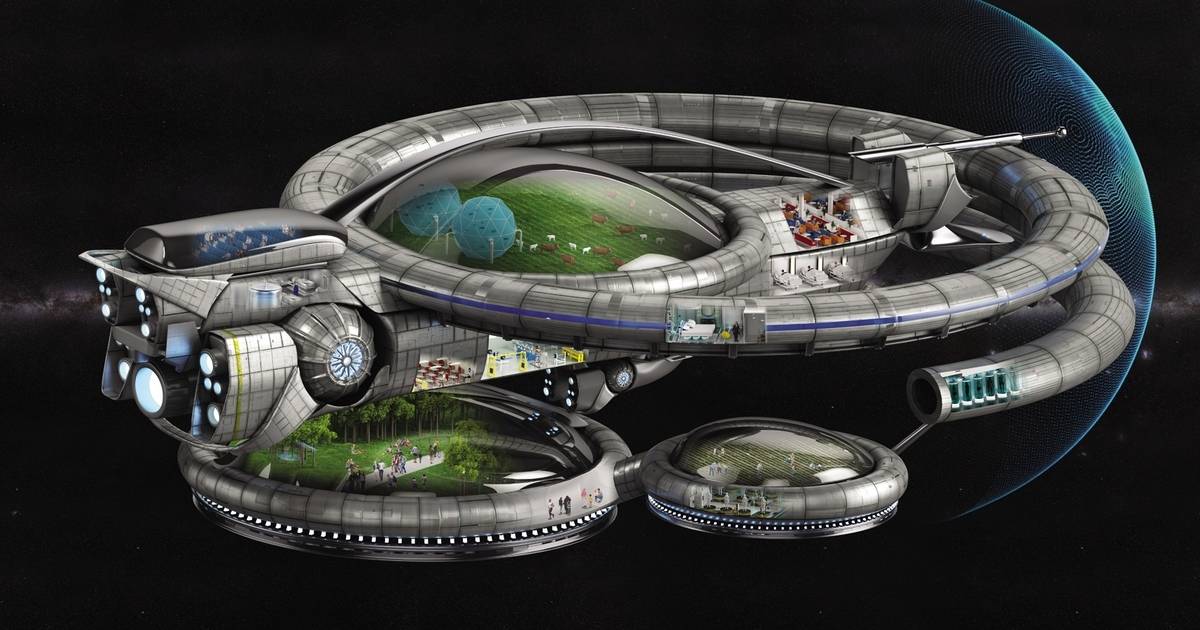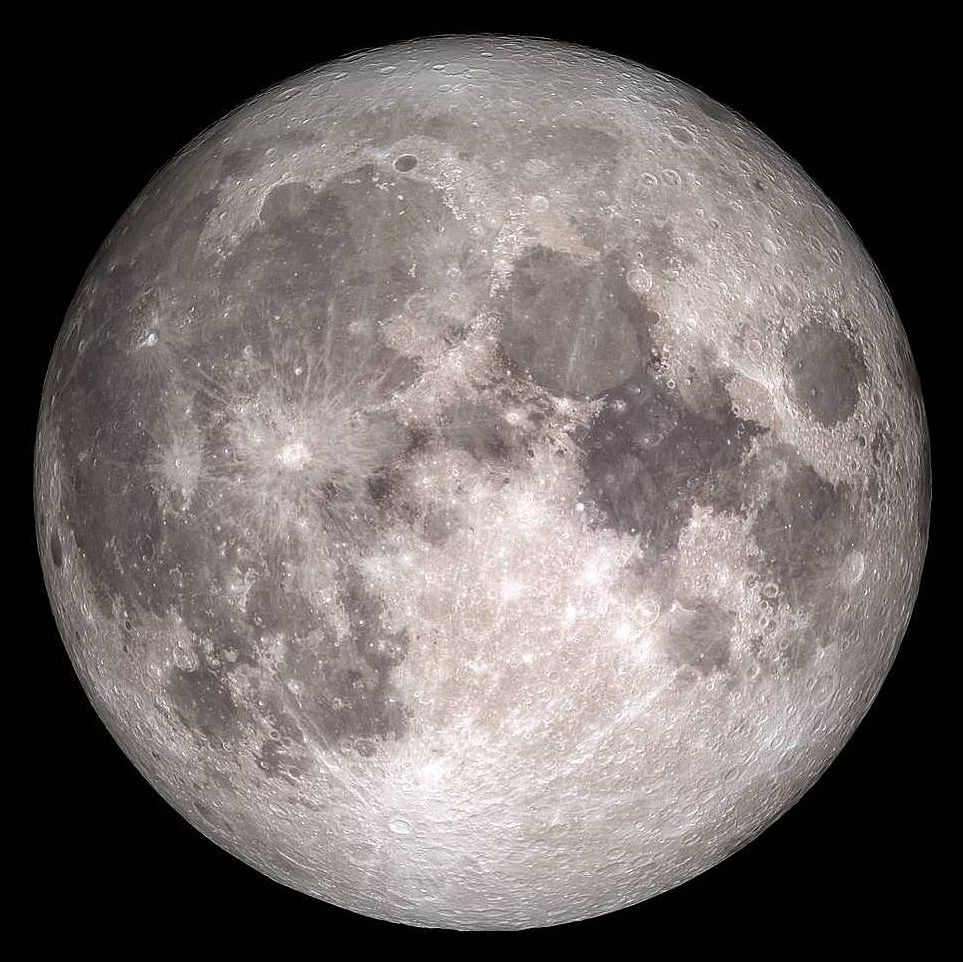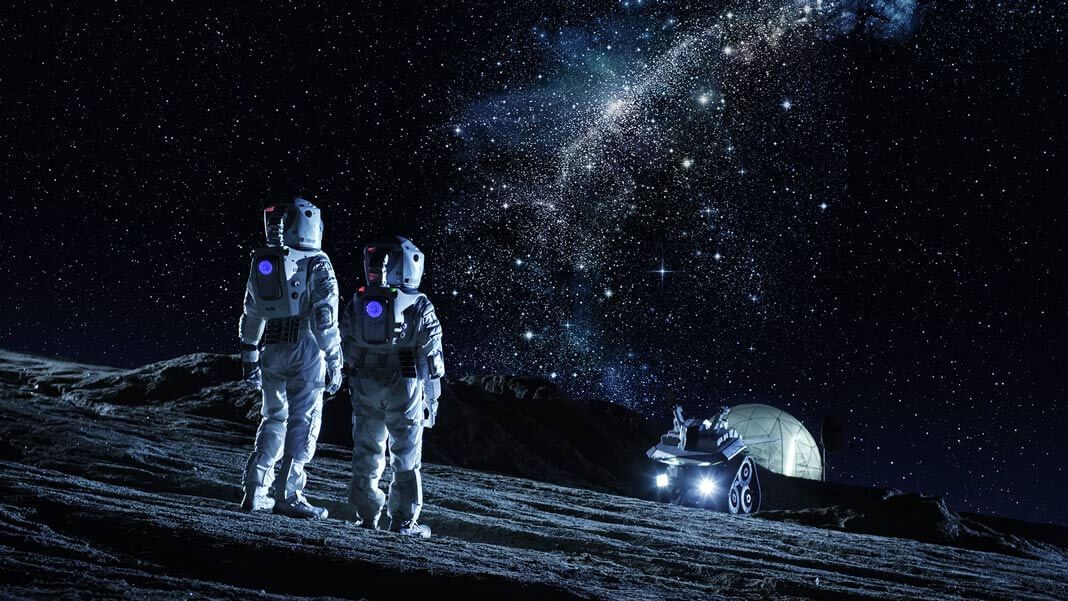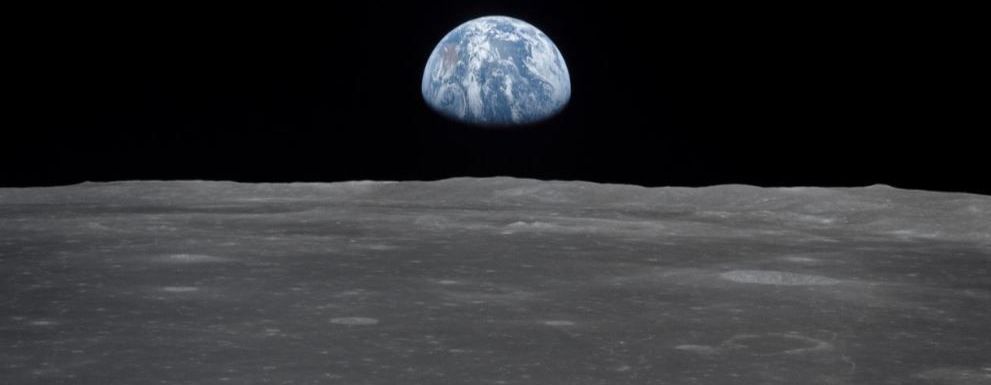NASA Administrator Jim Bridenstine reflects on the former president’s contributions to our space program by saying, “The President noted it was humanity’s destiny to explore, and America’s destiny to lead. We salute this great American leader, who challenged us to chart a course for the future to benefit all humanity.”
Category: space travel – Page 413
Huge Rockets Need Huge Lifts
Posted in space travel
To get to the Moon, Mars and beyond: we’re going to need a bigger boat. NASA’s Space Launch System will be the largest rocket ever assembled. So how do you build a rocket of unprecedented size? Find out: https://go.nasa.gov/2reryWv&h=AT1kQENIbN8mgnEjOtOB961e5lWIk9…o6EX1Flehg
NASA astronaut Anne McClain is expected to take her first spaceflight aboard Soyuz, as every U.S. astronaut has done since 2011 — but she may be one of the last.
The first stage foresees the launch of a module to orbit the moon, the RBC news website reported, citing Nikolai Sevastyanov, the head of Russia’s TsNIIMash federal rocket and spaceсraft development corporation.
The second phase will reportedly involve sending the country’s first manned mission to the moon and starting construction of a long-term base between 2025 and 2034. The program’s third stage envisions the completion of the base’s construction by 2040 and the establishment of an “integrated manned moon exploration system.”
Construction of the moon colony is set to begin late in 2025, the state-run RIA Novosti news agency cited Yevgeny Mikrin, Russia’s chief designer of manned space programs, as saying during a presentation of the draft lunar program on Wednesday.
Proxima b, our nearest neighboring exoplanet, is almost 25 trillion miles away. Even one of our fastest spaceships—the 31,600-mile-per-hour New Horizons—would take hundreds of thousands of years to get there. Assuming we can’t figure out how to warp space-time (seems unlikely, but fingers crossed), we’re still looking at a couple-hundred-year trip in the best-case scenario, which leads to the real problem: No human crew could survive the entire ride. Science-fiction writers have long floated so-called generation ships as a solution. Designers would outfit these interplanetary cruise vessels to support a community of adults and their children, and their children’s children, and their children’s children’s children…until humanity finally reaches a new celestial shore. Here’s our best guess for what it would take to sow the seeds of an extrasolar species.
Career planning
Successive generations need to fill all the vital crew roles—such as medics and mechanics—which doesn’t leave much room for freedom of choice. A version of modern career tests would assign occupations based on aptitude, passions, and available jobs.
We are making tangible progress in America’s return to the Moon’s surface to stay. The innovation of America’s aerospace companies, wedded with our goals in science and human exploration are going to help us achieve amazing things on the Moon and feed forward to Mars.
Nine U.S. companies now are eligible to bid on NASA delivery services to the lunar surface through Commercial Lunar Payload Services (CLPS) contracts, as one of the first steps toward long-term scientific study and human exploration of the Moon and eventually Mars.
These companies will be able to bid on delivering science and technology payloads for NASA, including payload integration and operations, launching from Earth and landing on the surface of the Moon. NASA expects to be one of many customers that will use these commercial landing services.
“Today’s announcement marks tangible progress in America’s return to the Moon’s surface to stay,” said NASA Administrator Jim Bridenstine. “The innovation of America’s aerospace companies, wedded with our big goals in science and human exploration, are going to help us achieve amazing things on the Moon and feed forward to Mars.”
It’s not like moon-walking astronauts don’t already have plenty of hazards to deal with. There’s less gravity, extreme temperatures, radiation—and the whole place is aggressively dusty. If that weren’t enough, it also turns out that the visual-sensory cues we use to perceive depth and distance don’t work as expected—on the moon, human eyeballs can turn into scam artists.
During the Apollo missions, it was a well-documented phenomenon that astronauts routinely underestimated the size of craters, the slopes of hilltops, and the distance to certain objects. Objects appeared much closer than they were, which created headaches for mission control. Astronauts sometimes overexerted themselves and depleted oxygen supplies in trying to reach objects that were further than expected.
This phenomenon has also become a topic of study for researchers trying to explain why human vision functions differently in space, why so many visual errors occurred, and what, if anything, we can do to prepare the next generation of space travelers.
NASA has chosen a set of companies to partner on moon exploration, and the winners will be announced tomorrow (Nov. 29).
Showrunner Jeff Buhler has built a fascinating world around Martin’s story seeds, starting by setting the action within the foreseeable future, rather than in an incomprehensibly distant one. The invented technologies here are particularly intriguing, like the genetic modifications first officer Melantha Jhirl (Jodie Turner-Smith) has to make her better suited for space travel, or the cybernetics technician Lommie (Maya Eshet) uses to interface with machinery. Given the state of real-world technological developments in genetic engineering and research into brain-machine interfaces, the series feels plausible and grounded, even though it’s set in a spacefaring future.
The 10-episode space series adapts a 40-year-old George R.R. Martin novella.
“We are going,” is an important part NASA’s motto for its return to the Moon, and to get there, the space agency will need corporate partners. As part of carrying out the private sector integration requirements of White House Space Policy Directive 1, NASA Administrator Jim Bridenstine announced today at 2 pm EST the nine companies the agency has selected to compete for $2.6 billion in contracts to support its Moon to Mars mission. These contracts will be geared to filling the needs of NASA’s Commercial Lunar Payload Services Program over the next ten years of its development.
